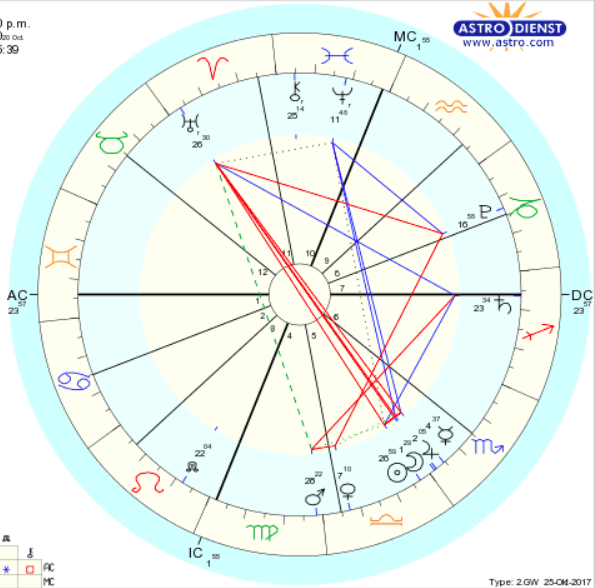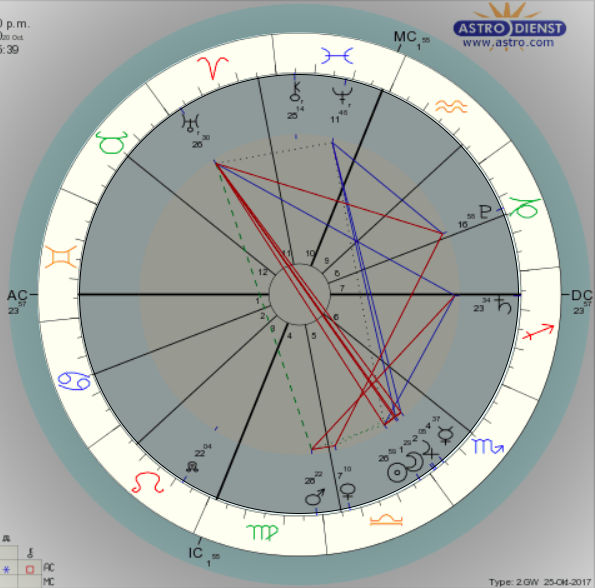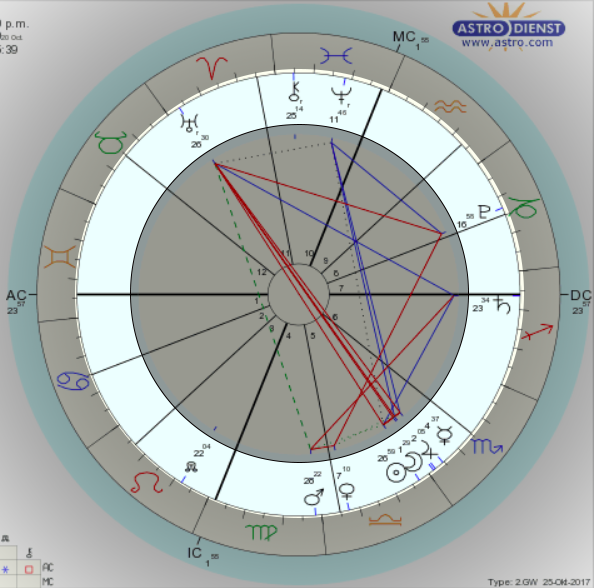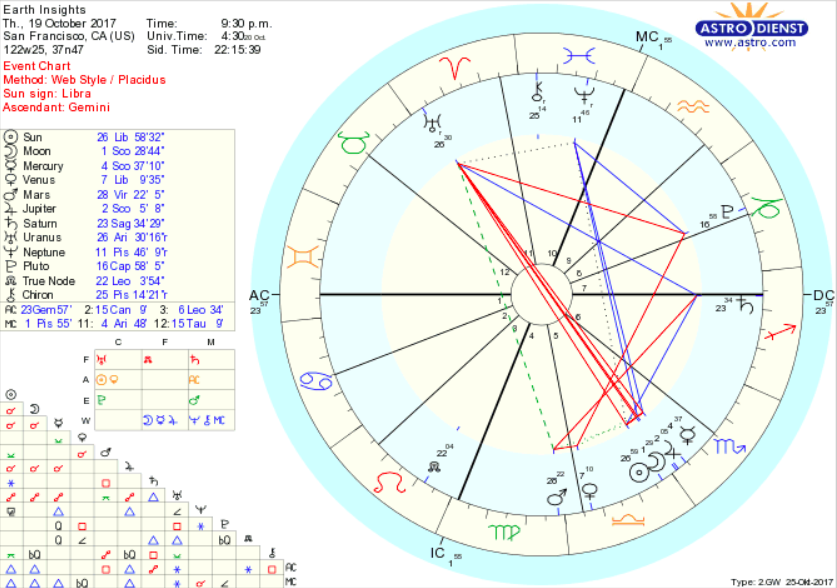If you’ve followed some of my tips on generating your natal chart, this is about what you’re looking at right now.

If you haven’t worked with charts before, or even if you have, there’s a lot going on and it can be a little overwhelming. I’ll break it down into three main parts.
The ecliptic

The ring of glyphs around the outside of the chart show the twelve zodiac signs. This is the ecliptic, a path of star constellations that maps to the orbits of every planet in our solar system. Each zodiac sign “rules” 30 degrees of the ecliptic, which may or may not have a planet passing through it at the time.
The planets

Each planet is represented with its signature glyph, and mapped to where it was along the ecliptic at the time you’ve specified. This tells you what zodiac sign the planet is in.
Astrologers know that the sun and moon are not planets. But in astrological charts, the Sun and Moon get placed along the ecliptic just like all the other planets in the solar system.
You might notice that some planets are clustered together, sometimes even right on top of each other. This is normal; almost nobody has a perfectly even distribution of planets around the ecliptic. In fact there’s a whole branch of interpretive astrology that looks into distribution patterns.
The aspects
Okay, so about all those red and blue lines. If you look closely, you’ll see that each line connects two different planets. These are called aspects, and refer to how many degrees apart from one another those planets are.

The tables show information about the exact degree of each planet on the ecliptic (top left) as well as their aspects to one another (bottom left). The middle table wedged in there shows how many planets are in each element and mode.
Technically every planet is “in aspect” to all the other planets, but some aspects (or, degrees) are thought to be especially significant, and those are the ones that appear on the chart. Sometimes I find the chart hard to parse for this purpose, and on Astrodienst there’s a useful table further down that shows the same information in a different way.
Now what?
Now you know what you’re looking at, but what does all that mean? Reading all the information in a chart takes some time; that’s what astrology is all about, really. If you’re looking for a starting point, I’d recommend one of these:
- What is your rising sign? This is the point on the ecliptic that crosses the horizon. For the example chart here, the ascendant (marked by AC) is in Gemini.
- What is your moon sign? Look for the crescent glyph and see where it lands against the ecliptic. For the example here it’s in Scorpio.
- Compare either of these with your sun sign. How do you think the two work in relation to one another? Does the sun make an aspect to either your ascendant or your natal moon?
That’s roughly where I started, and then I started digging more into individual planet placements and so on. If you plan to dig into the details more, I recommend saving your chart as a PDF or even printing it out so that you can use it as a reference. I’m still learning more about my own chart every year!